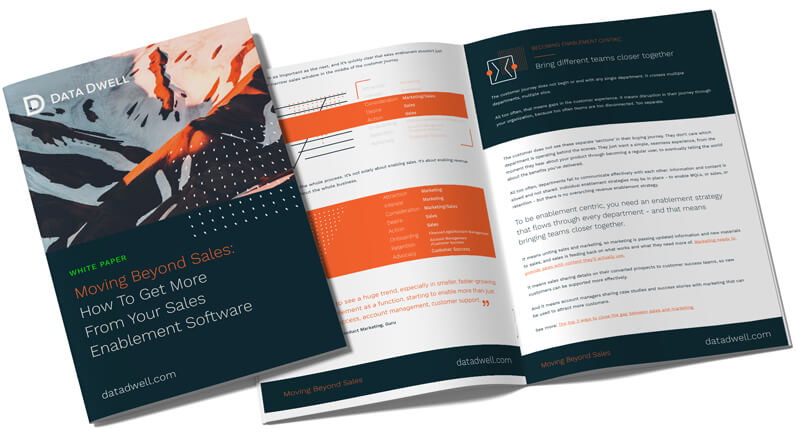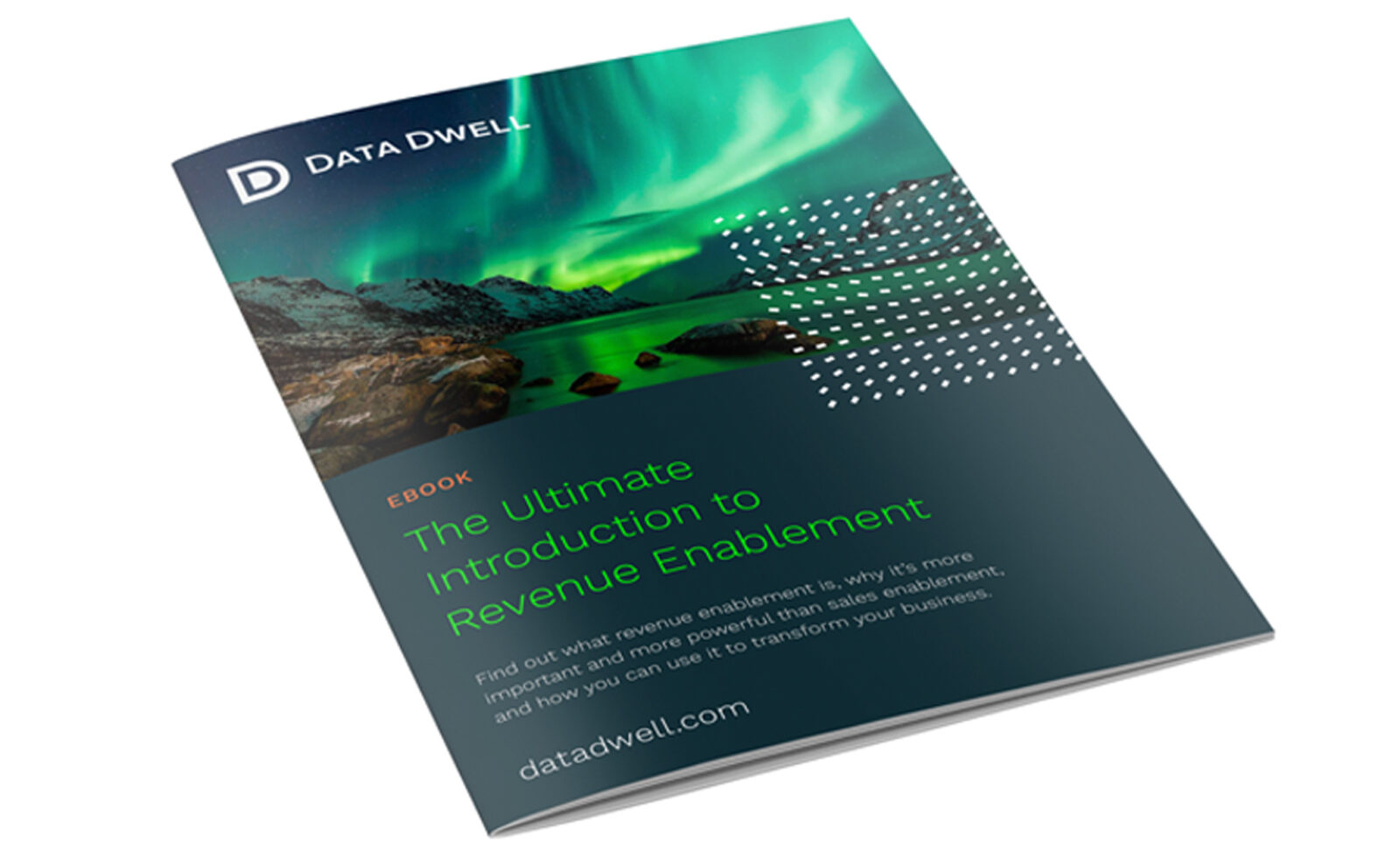
Revenue enablement is one of the most exciting, most promising new strategic approaches to sales, operations and business growth in the last decade.
It’s an approach we’ve long been advocating at Data Dwell.
While sales enablement has been hailed as “the next big thing”, it’s only the beginning. And in fact, our CEO argues that ‘sales enablement is broken’.
“Sales enablement is flawed because it immediately excludes everyone else in the organization. It excludes every other department that has an equally important role in driving revenue and helping the business succeed.”
“We need to think about the WHOLE customer experience. We need to focus on Revenue Enablement” – Olafur Thorkelsson.
Because revenue enablement focuses on the entire customer experience, it delivers better results for everyone. For buyers, for sellers, for the organization as a whole.
Implementing a revenue enablement approach isn’t easy though.
It requires your organization to adopt three core principles and stand behind them. Three essential elements that will encompass every part of your business, driving all your strategy and tactics as you transform into a revenue enablement business.
The three core principles of a revenue enablement approach are:
1. You must put the customer at the centre of everything
2. You must bring every department in your organization along with you
3. You must recognise that revenue comes from multiple sources, direct and indirect
1. Put the customer at the centre of everything
The single biggest change you must make to your mindset – your entire attitude towards current sales enablement strategy – is to put the customer first. Put the customer front and centre, at the heart of your entire approach.
That’s the biggest difference between sales enablement and revenue enablement.
Where sales enablement focuses on the sale, revenue enablement focuses on the customer.
You need to make sure that every operational change, every strategic initiative, every new tactic you deploy is ultimately aimed at improving the customer experience. You should be enabling a smoother, more engaging, more rewarding experience for your customers at every single touchpoint.
Every time a customer interacts with your organization – and in this instance that means every stage of that customer’s lifetime, from lead to prospect to paying user to lapsed client – they should get the best possible experience from your brand.
And the best experience means receiving exactly what they need, when they need it. The right information, the right support, the right results – at the right time.
That’s the central, integral element of a revenue enablement approach, and it brings us onto our second core principle.
2. Bring every department in your organization along with you
Its very name implies that revenue enablement is so much more than sales. So much bigger. But it’s not just about the name. It’s about the actions you take on the ground, in your organization.
Because revenue enablement focuses on every single stage in the customer journey for the entirety of a customer’s lifetime with your business, a revenue enablement approach must incorporate every single department that interacts with the customer in any way, shape or form.
It transcends departmental divides and it must be owned by every team, in every department.
A customer will interact with multiple individuals in multiple departments on their journey through your organization, from the moment they land on marketing’s radar, through the traditional sales process and onto onboarding, retention and renewals.
Sales reps, admin clerks, lawyers, finance managers, account managers and customer success agents will all engage that customer at one point or another. They all have the potential to influence that customer and drive more revenue for the organization… this is not just a role for sales reps.
3. Recognize that revenue comes from multiple sources, direct and indirect
Finally, recognizing that revenue comes from multiple sources in your organization, and understanding that customers can contribute revenue in a variety of different ways is the third core principle you must adopt.
Though it might seem obvious, it’s one of the biggest stumbling blocks in deploying a revenue enablement approach.
It’s all too easy to get caught up in sales. To think that it’s the sales reps closing the deals that are bringing in the revenue for your organization. They are, of course, but they’re only one cog in your machine.
Sales – in the traditional sense – will always remain very important, but there are other, equally, if not more important sources of revenue for your business.
After all, retaining a customer is up to twenty five times more cost effective than winning a new one. An increase of just 5% in retained customers can increase profits by between 25 and 95%.
Retention and renewal is essential. So too is cross-selling and upselling. It’s far, far easier to sell to an existing customer than a new one. The success rate of cross-selling and upselling is typically between 60 and 70%. For new sales, it’s between 5 and 20%.
The math is simple, and that’s only looking at the direct sources of revenue. A revenue enablement approach is also focused on customer satisfaction, on making sure every single customer gets the very best experience, so they remain happy and content.
Happy customers make referrals. They become brand advocates. They stay loyal for years to come, contributing in any number of ways to your revenue.
That’s why you must shift your thinking away from traditional sales.
Are you ready to adopt a revenue enablement approach?
If you believe in these three core principles, and you’re willing to stand behind them to drive change across your organization, then you’re ready to adopt a revenue enablement approach.
And revenue enablement software could be a great place to start.




